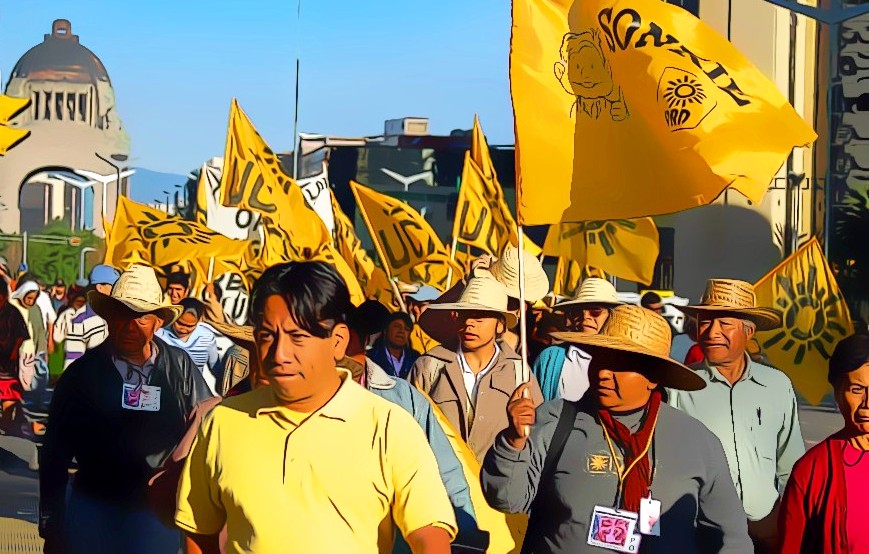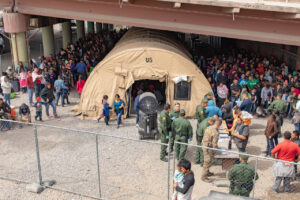(Phoenix, Arizona) — Almost every time a group of people is going to take the streets to march and protest in favor or against any cause or issue, the question about the effectiveness of demonstrations arises. It has become a cliché to hear arguments defending and attacking the validity of the subject: “marches do work,” “marches don’t work.”
Perhaps even this commentary is part of that repetitive discourse to justify one side or the other, but for this commentator, the debate is redundant, because marches do work. It all depends on what purpose and on if those who advocate or oppose marches are willing to accept the price and acknowledge the consequences that come along with a protest.
RELATED ARTICLE
New generations have to live their own experiences, most of the time in spite of what history has already taught us all. History will repeat itself, regardless. However, for the sake of some sense of advance and accomplishment, we shouldn’t be discussing whether marches do work or not, because the evidence is overwhelmingly in favor that they work, though not only or always in the way advocates and opponents of marches envision, want, or are willing to recognize.
Marches can work for both sides; those protesting and those being protested against. As a journalist for many years, I have seen it first hand, having attended big and small demonstrations, and having walked miles and miles along dissatisfied, angry, sometimes violent demonstrators. A march, especially a large one, cannot go unnoticed and without some sort of outcome, good or bad. In any sense, marches work because they have an effect, even if negative and counterproductive to those who organized it.
I have attended massive, impressive demonstrations where tens of thousands of people pressured the government to change their condition or situation. In every instance, these marches have worked, whether it was in bringing attention in such a dramatic way to their pleas, generating public content or displease, or backfiring on them when authorities and governments crushed movements, arrested leaders, and even killed demonstrators.
Marches work, but not just in one intended way. They may work to help alleviate an issue or to worsen it. Sometimes protests bring awareness; other times they result in repression and retaliation. Groups organizing demonstrations do it because they are persuaded they will work, but many times they fail to assess the full extent and consequences that will follow, and so often they end up working against them. Those who are being protested against, particularly if they’re in political or economic power, manipulate demonstrations for their own purposes, even to try to prove their point, justify their policies, and demonize protesters.
At the dawn of my career as a writer and photojournalist, I attended some of the multitudinous marches teachers organized in Mexico. Those were monster marches, not the junior demonstrations we see here in Arizona. They sure created awareness to their pleas for better salaries and benefits; there were so many marching that it was impossible to ignore them.
They also made many people angry because they paralyzed Downtown Mexico City, blocking streets for days and weeks. For them, their demonstrations worked positively but also negatively. They achieved little progress and failed to see most of their demands met by the government. More sadly, teachers saw one of their own killed, allegedly by the government.
Teacher and leader Misael Nuñez Acosta was gunned down on January 30, 1981. He had just finished an organizing meeting to plan a national teachers’ demonstration to take place in Mexico City. The march organized after his death was even more impressive; the government’s repression continued. Those strong marches worked in more than one way, and not always to benefit the demonstrators.
Most recently, I walked along one million people, again in Mexico City. Presidential candidate Andrés Manuel López Obrador and his thousands and thousands of supporters from all over the country of Mexico took to the streets several times. His protests were some of the most impressive, large and peaceful I’ve ever seen. López Obrador claimed he was the legitimate winner of the 2006 election, and that the incumbent government had stolen the election from him.
The massive demonstrations shook the city, pressured the government, and created a sense of a grassroots movement among protestors. Yet, the party in power utilized the marches as a way to prove López Obrador was a populist who preyed on Mexico’s poorest and gained them over providing them with basic needs. At the end, those marches worked for more than one purpose; not for López Obrador and his many sympathizers’ purpose.
Here in the United States, I also attended the immigrants’ marches of March 24, and April 10, 2006, and May 1st, 2007. Organizers brought out to the streets the, until then, “invisible” masses of undocumented immigrants to dramatize the need for a comprehensive immigration reform. Supposing that by seeing a combined amount of millions of immigrants marching across the nation in cities like Phoenix, Chicago and Los Angeles, American citizens would be persuaded to accept a reform to legalize about 12 million people without documents.
Organizers, though, failed to consider the potential negative consequences, the backlash that followed against immigrants, and the stage created in Arizona, for example, for the volatile racial atmosphere that is fueling politicians’ crackdown on undocumented immigrants, as well as the immigration enforcement conducted not just by ICE anymore but –attention, not just from the Maricopa County Sheriff Department (MCSO)– by half a dozen of Arizona law enforcement agencies.
These demonstrations worked to create awareness about the issue, but also worked for politicians to prove their points that immigration crackdown is necessary. Today, many people believe that the main outcome of those impressive and intimidating immigrant marches was an increase in policies against undocumented individuals, a resurgence of hate crimes, and a growing opposition to an immigration reform.
Undocumented immigrant advocacy groups in Maricopa County have been protesting and organizing demonstrations more regularly since 2007. They have their own claims of effectiveness and their reasoning to continue taking their demands to the streets. At the same time, beginning with a series of protests in December 2007 against a business owner that hired off-duty sheriff deputies to patrol their premises, the MCSO launched, along the marches, a systematic crackdown on the streets to stop motorists mainly for non-moving violations that lead to the arrest of undocumented immigrants.
The Sheriff Department’s actions are too obvious to dismiss the idea that they are not using a racial and economic profile to stop certain people based on their physical appearance, and that he is retaliating against those who have protested against him.
Once again, these local demonstrations worked. They created awareness against Arizona’s crackdown on undocumented workers and their families not only locally, but in other states. At the same time, these protests have worked for other purposes for the opposing side, by generating more support for the Sheriff, also in other states, and with people who didn’t know about him before.
Another march is scheduled to take place this Saturday, January 16, 2009 in Phoenix. It may achieve its intended purposes, but it may also have its unintended consequences. Even before this demonstration will place, the head of the MCSO announced, according to an article published in The Arizona Republic, continued actions in the enforcement of Arizona laws against undocumented immigrants. He will again counteract by closing the jails to visitors since the protest is targeting the county’s jail complex in South Phoenix.
Since demonstrations do work, perhaps the real issue is not to debate about their effectiveness, as some inexperienced analysts still do, but to consider if the consequences are worth the effort, not for the organizers, but for the people they say they represent, and ultimately, will feel in their own flesh the positive or negative impact of the protest others organized for them.
Those who claim to work on behalf of the people and encourage them to protest may be willing to pay a price for their actions, but should not assume that other, more vulnerable people can afford to pay the price of the negative consequences marches and protests may bring, and most likely they will.
The short and long outcome of demonstrations may well benefit those who participate in them. In the case of honest, hard-working and law-abiding workers and their families who are in need of an immigration reform, hopefully their situation can be resolved and obtain legal status. This writer has extensively written in favor of that. So far, my personal observation is that some actions have done more harm than the benefit they have achieved.
Nevertheless, they also must be aware of the consequences and understand that there may be a high price to pay. Instead of deciding if marches do work or not, organizers and those who participate in the demonstrations need to decide if that price is worth it, and whether they’re willing to live with the outcome, even if it boomerangs on them.
© 2011 – 2023, Eduardo Barraza. All rights reserved.





